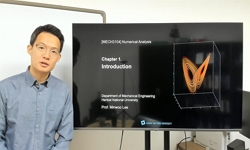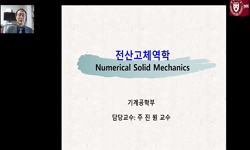Cost-effective tunnel excavation can be achieved with the blasting method. Unfortunately, blasting technique brings with it blastinginducedvibration and noise, which can cause critical social problems such as public complaints. Thus, the development o...
http://chineseinput.net/에서 pinyin(병음)방식으로 중국어를 변환할 수 있습니다.
변환된 중국어를 복사하여 사용하시면 됩니다.
- 中文 을 입력하시려면 zhongwen을 입력하시고 space를누르시면됩니다.
- 北京 을 입력하시려면 beijing을 입력하시고 space를 누르시면 됩니다.



Precutting of Tunnel Perimeter for Reducing Blasting-Induced Vibration and Damaged Zone – Numerical Analysis
한글로보기https://www.riss.kr/link?id=A103919183
- 저자
- 발행기관
- 학술지명
- 권호사항
-
발행연도
2014
-
작성언어
English
- 주제어
-
등재정보
KCI등재,SCIE,SCOPUS
-
자료형태
학술저널
-
수록면
1165-1175(11쪽)
-
KCI 피인용횟수
9
- DOI식별코드
- 제공처
-
0
상세조회 -
0
다운로드
부가정보
다국어 초록 (Multilingual Abstract)
Cost-effective tunnel excavation can be achieved with the blasting method. Unfortunately, blasting technique brings with it blastinginducedvibration and noise, which can cause critical social problems such as public complaints. Thus, the development of a novel tunnelexcavation method, one that can reduce the blasting-induced vibration, is strongly demanded for the effective management of urbanspaces. Thus, this study introduces an innovative vibration-reduced excavation method that combines the conventional blastingtechnique with the precutting process and carries out a feasibility study of the proposed tunnel excavation method using threedimensionalfinite element analyses. The micro-scale study focuses on the stopping holes and contour holes while the macro-scale studydeals with the case of a real scale tunnel. From the micro-scale analyses, it can be deduced that the proposed method is effective for thereduction of blasting-induced vibration compared to the conventional line-drilling method. From the macro-scale simulation, it is foundthat the reduction of blasting-induced vibration is independent of the thickness of the precutting free surface but dependent on the depthof the precutting free surface. As the depth of the precutting free surface increases, blasting-induced vibrations as well as the depth of theexcavation-damaged zone can be significantly reduced. Vibration energy induced by blasting does not transmit through the free surfaceand is trapped inside the target tunnel face. Guided blasting waves cause stress concentration at the target face and maximize the blastingefficiency. It is expected that the construction cost will decrease due to a decrease in the number of drilling holes, the weight of theexplosive charges, the overbreak space, and the excavation-damaged zone. In particular, the reductions of the overbreak space andexcavation-damaged zone enhance the safety of tunnel construction.
참고문헌 (Reference)
1 조계춘, "절리암반의 변형률 의존적 전단탄성계수 및 감쇠비 특성을 고려한 터널의 내진 해석" 사단법인 한국터널지하공간학회 12 (12): 295-306, 2010
2 오태민, "연마재 워터젯 변수가 암석제거에 미치는 영향" 사단법인 한국터널지하공간학회 14 (14): 421-435, 2012
3 이인모, "굴착선 주변공 발파의 암반손상을 고려한 터널 안정성 검토" 한국지반공학회 19 (19): 167-178, 2003
4 Lisitsyn, I. V., "Use of inductive energy storage for electric pulse destruction of solid materials" 6 (6): 105-108, 1999
5 International conference of building officials, "Uniform building code"
6 Dudoladov, L. S., "Thermal rock breaking" 5 (5): 194-198, 2006
7 Momber, A. W., "Test parameter analysis in abrasive water jet cutting of rocklike materials" 34 (34): 17-25, 1997
8 Holmberg, R., "Swedish approach to contour blasting" 113-127, 1979
9 Zhongzhe, J., "Splitting mechanism of rock and concrete under expansive pressure" 141-148, 1988
10 Lysmer, J., "Shear waves in plane infinite structures" 98 (98): 85-105, 1972
1 조계춘, "절리암반의 변형률 의존적 전단탄성계수 및 감쇠비 특성을 고려한 터널의 내진 해석" 사단법인 한국터널지하공간학회 12 (12): 295-306, 2010
2 오태민, "연마재 워터젯 변수가 암석제거에 미치는 영향" 사단법인 한국터널지하공간학회 14 (14): 421-435, 2012
3 이인모, "굴착선 주변공 발파의 암반손상을 고려한 터널 안정성 검토" 한국지반공학회 19 (19): 167-178, 2003
4 Lisitsyn, I. V., "Use of inductive energy storage for electric pulse destruction of solid materials" 6 (6): 105-108, 1999
5 International conference of building officials, "Uniform building code"
6 Dudoladov, L. S., "Thermal rock breaking" 5 (5): 194-198, 2006
7 Momber, A. W., "Test parameter analysis in abrasive water jet cutting of rocklike materials" 34 (34): 17-25, 1997
8 Holmberg, R., "Swedish approach to contour blasting" 113-127, 1979
9 Zhongzhe, J., "Splitting mechanism of rock and concrete under expansive pressure" 141-148, 1988
10 Lysmer, J., "Shear waves in plane infinite structures" 98 (98): 85-105, 1972
11 Konya, C. J., "Rock blasting and overbreak control, FHWA-HI-92-001"
12 Song, K. I., "Numerical simulation of the impactecho method for the bonding state evaluation of tunnel shotcrete" 47 (47): 1274-1288, 2010
13 Howie, J. A., "Numerical simulation of seismic cone signals" 42 (42): 574-586, 2005
14 Jeng, F. S., "New development of waterjet technology for tunnel excavation purposes" 19 : 438-439, 2004
15 Dey, K., "Investigation of blast-induced rock damage and development of predictive models in horizontal drivages" ISM 2004
16 MIDAS-GTS, "Geotechnical & tunnel analysis system"
17 Chollette, D., "Fracture stresses induced by rock splitters" 13 (13): 281-287, 1976
18 Res, J., "Environment-friendly techniques of rock breaking" A.A. Balkema 2003
19 Uysal, O., "Effect of barrier holes on blast induced vibration" 45 (45): 712-719, 2008
20 Parsakhoo, A., "Demolition agent selection for rock breaking in mountain region of hyrcanian forests" 3 (3): 384-391, 2009
21 Rustan, L. N., "Controlled blasting in hard intense jointed rock in tunnels" 78 (78): 63-68, 1985
22 Starfield, A. M., "Compression waves generated in rock by cylindrical explosive charges, A comparison between a computer model and field measurement" 5 (5): 65-77, 1968
23 Shao, P., "Applying high voltage pulse discharge in rock blasting: Theoretical problems" 5 : 349-353, 2010
24 Histake, M., "Analytical contribution to tunnel behavior caused by blasting" E191-E194, 1983
25 Park, D., "A numerical study on the screening of blast-induced waves for reducing ground vibration" 42 (42): 449-473, 2009
동일학술지(권/호) 다른 논문
-
Design and Evaluation of Actuated Four-Phase Signal Control at Diamond Interchanges
- 대한토목학회
- 이상수
- 2014
- KCI등재,SCIE,SCOPUS
-
Risk-Integrated Cash Flow Forecasting for Overseas Construction Projects
- 대한토목학회
- 한승헌
- 2014
- KCI등재,SCIE,SCOPUS
-
- 대한토목학회
- 김종오
- 2014
- KCI등재,SCIE,SCOPUS
-
- 대한토목학회
- 진석우
- 2014
- KCI등재,SCIE,SCOPUS
분석정보
인용정보 인용지수 설명보기
학술지 이력
| 연월일 | 이력구분 | 이력상세 | 등재구분 |
|---|---|---|---|
| 2023 | 평가예정 | 해외DB학술지평가 신청대상 (해외등재 학술지 평가) | |
| 2020-01-01 | 평가 | 등재학술지 유지 (해외등재 학술지 평가) |  |
| 2010-01-01 | 평가 | 등재학술지 유지 (등재유지) |  |
| 2008-01-01 | 평가 | 등재학술지 유지 (등재유지) |  |
| 2005-05-27 | 학술지명변경 | 한글명 : 대한토목학회 영문논문집 -> KSCE Journal of Civil Engineering |  |
| 2005-01-01 | 평가 | 등재학술지 선정 (등재후보2차) |  |
| 2004-01-01 | 평가 | 등재후보 1차 PASS (등재후보1차) |  |
| 2002-01-01 | 평가 | 등재후보학술지 선정 (신규평가) |  |
학술지 인용정보
| 기준연도 | WOS-KCI 통합IF(2년) | KCIF(2년) | KCIF(3년) |
|---|---|---|---|
| 2016 | 0.59 | 0.12 | 0.49 |
| KCIF(4년) | KCIF(5년) | 중심성지수(3년) | 즉시성지수 |
| 0.42 | 0.39 | 0.286 | 0.06 |




 ScienceON
ScienceON






